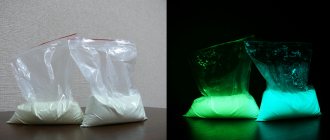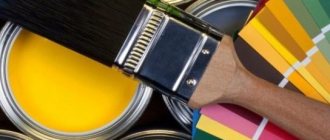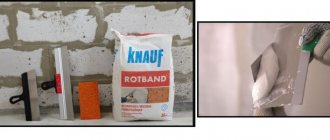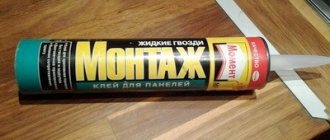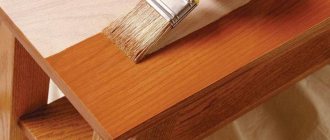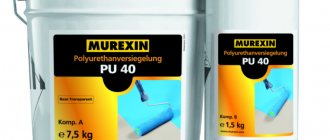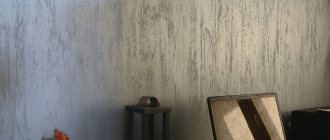Items used outdoors require additional protection. Without a special coating, they quickly deform under the influence of the environment. Heat-resistant protective coating is the best option for increasing the service life of metal coatings. Red lead is currently considered one of the most popular compounds.
Red lead is currently considered one of the most popular compounds.
Painting with oil paint
Painting with red lead
The metal surface to be painted must be properly cleaned of rust, scale, and grease deposits. It is recommended to use a rust modifier in the primer before painting. Wooden products must be sanded, sanded, degreased if necessary, and then treated with a compatible primer.
Before application, the paint is thoroughly mixed, adjusted to the desired condition with a solvent, and applied to the surface using a brush or roller in two layers with a 24-hour interval between operations. After painting, the tool is cleaned with white spirit, the brushes are wiped with a dry cloth and coated with vegetable oil.
Painting is carried out wearing rubber gloves and safety glasses. Enclosed spaces are provided with sufficient ventilation and air flow both during work and when the paintwork is drying. Since oil paints are flammable, fire safety precautions must be observed.
Video: paint test red lead iron MA-15
Application of red lead paint MA-15, MA-015
Preparation of MA-015 red lead paint consists of diluting a thickly grated lump in natural and alkyd drying oils to a painting consistency (30-40% drying oil by weight of the thickly grated paint). To speed up the drying process, driers are additionally added to the paint. It is allowed to use white spirit thinners no more than 5% of the total paint mass. If Oxol drying oil is used for dilution, the resulting paint is suitable only for interior work.
The use of paint is determined by the properties of the pigment and film-forming substance. Iron minium paint MA-15, MA-015 is used for coating metal products used both outside and indoors. When exposed to the atmosphere, a double layer of paint imparts protective properties to the metal in temperate climates for up to one and a half years.
The paint can be used for application to wooden surfaces, for interior and exterior finishing work in construction and renovation. It is used both in everyday life and in industrial work.
Application of red lead
Iron lead pigment is widely used in many industries. Due to its abrasive properties, it is used when polishing metal and glass surfaces. Ferrous ocher is used in the manufacture of powder-type fire extinguishing mixtures and various fire retardant compounds. Red lead can be used not only as a pigment and catalyst, but also as a filler, for example, in the production of rubber and plastics. Ferrous ocher is often used in the manufacture of thermite mixture (used as an incendiary mass in the production of ferroalloys and the military industry). The powder is added as a filler and to add color to paving slabs, Euro fences, and some building mixtures.
Iron lead powder is very widely used in the manufacture of various paints and varnishes. Ferrous ocher goes well with almost all types of film-forming agents (nitrovarnishes, oil-based, water-based, etc.). The pigment is introduced into the composition of primers, paints, enamels, putties, including thickly grated paints and varnishes. A mixture of red lead, drying oil and some other additives is used to paint various metal surfaces to make them resistant to corrosion.
Ferrous ocher is included not only in general purpose paints, primers and enamels, but also in some critical materials.
All surfaces that are outdoors require additional treatment to protect them from external atmospheric influences. Minium paint has proven itself well, as it can prevent aggressive environmental influences. This article will discuss the features and types of red lead, as well as give tips on coloring.
Application area
Dry red lead pigment of natural origin, obtained from iron oxide, is used in the production of paints and varnishes (primers, paints and varnishes), the manufacture of plastic and glass products, and in the automotive industry. It is not recommended to use red lead for painting wooden floors.
In shipbuilding, lead-based ship's lead is used. This treatment prevents shells from fouling the bottoms of ships and protects them from the destructive effects of water. Some motorists use similar red lead to treat the bottoms of cars.
The use of red lead has become widespread in private construction to protect metal, concrete and wooden structures. They are processed by:
- fireplaces and stoves;
- ceramic tiles;
- wooden structures;
- metal roofs;
- Garage Doors;
- fencing made of metal and wood;
- car bodies and underbody;
- pipelines and boilers.
Painting with red lead effectively protects the treated surface from moisture, temperature and sunlight, and prevents corrosion processes. The structures acquire a decorative appeal - the paint color is rich, with a glossy sheen.
Iron and lead lead is used as a primer when processing metal structures susceptible to corrosion. The rust layer is removed, the base is degreased for painting and treated with red lead. The primer prevents further corrosion of the metal; decorative enamels and paints can be used as a finishing touch.
In the video: painting the surface with red lead.
Story
There is a legend that in the 4th century BC. e. The Athenian artist Nicias waited for a long time for the arrival of a ship from the island of Rhodes with a cargo of white lead, which was manufactured on this island. The ship arrived at the Athenian port of Piraeus, but a fire broke out there and the fire spread to the ships carrying a cargo of whitewash. After the fire was extinguished, the artist climbed onto the deck of one of the damaged ships, hoping that the cargo had not been completely lost and that he would be able to find a whole barrel of paint that he desperately needed. In the hold of the ship he found barrels of whitewash, which, although heavily charred, did not burn. When they were opened, it turned out that they had not white paint, but bright red. So the fire suggested a method for making a new paint - red lead.
Application of red lead paint
- Before painting, the surface must be prepared. The base must be dry and clean. If metal is to be painted, remove traces of corrosion and also degrease the surface using an organic solvent. If we are talking about wood, we sand and scrape the material.
- Apply paint to the surface using a brush or roller. You can also use a spray bottle, especially in cases where large areas need to be treated. We apply the paint in not too thick layers to avoid drips.
- If painting is done with red lead, you need to stir the composition in the jar as often as possible - heavy lead settles to the bottom faster.
- After painting is completed, clean the used tool with a solvent. We wipe the brushes with a dry cloth, and then saturate the bristles with vegetable oil.
Precautionary measures
The instructions from the manufacturer contain mandatory safety measures that must be followed when applying red lead paint. These recommendations must be taken seriously.
Where are miniums used?
At the end of the hardening process, the iron oxide contained in the coloring composition becomes highly resistant to temperature changes and retains the brightness of the pigment throughout its entire service life. Iron miniums based on drying oil can be used for painting various indoor surfaces. It fits well on:
- plastic cladding;
- ceramic products;
- wood in all its forms;
- metal surfaces without galvanic treatment.
It is better to paint in two layers. This eliminates unpainting and ensures reliable surface protection. It is not recommended to use red lead dyes for painting wooden floors. Because they are subject to severe abrasion, the surface loses its gloss in a short time, and iron oxide begins to be released into the air. It's bad for your health.
Paints created on the basis of pentaphthalic varnish are used at home for painting external surfaces:
- metal roofs;
- garage doors;
- fencing parts;
- car bottoms and bodies;
- metal pipelines and boilers (cold);
- reinforced concrete and metal supports and other structures.
Work with primers and paints based on iron oxide should be carried out in personal protective equipment. Protective clothing, gloves, goggles, and a respirator are required. The process of staining with red lead is carried out in stages:
- the surface to be painted must be cleaned of dirt, dust, and rust;
- This is followed by degreasing with acetone, white spirit, or another solvent;
- then it is coated with a red lead-based primer.
The primed surface can be painted after complete drying. For the finishing coating, not only red lead, but any metal paints are used.
I found a liter jar of red lead and an almost full canvas mitten in the garage. I was looking for what and how to breed it - I got tired. Everywhere they say what kind of drying oil, and what kind and in what proportions, and in general the process itself is not described. but I did find some information. I'm lying here. Maybe it will be useful for someone... I haven’t gotten around to using it yet.
Red lead
Lead oxide product. It is a red-orange powder. Compared to other paints, red lead has the best anti-corrosion properties and is very resistant to the influence of external atmospheric conditions. For reliable protection against corrosion, at least two or three layers of red lead must be applied to the metal surface, followed by painting with two layers of appropriate colored paint. Red lead is supplied both in the form of a dry powder and thickly grated, in the form of a paste mixed with natural drying oil.
Thickly grated red lead is diluted by adding drying oil immediately before use, since during long-term storage the red lead particles settle and harden.
It is recommended to soak dry lead lead in a small amount of salt water for 1-2 days before mixing it with drying oil. Water helps to crush the minium particles, i.e., the formation of a more homogeneous mass when diluted with drying oil. Ready-to-use 1 kg of red lead contains 750 g of dry powder and 250 g of linseed oil.
Red lead is used for painting and priming external metal surfaces (sides, superstructures, spars), as well as interior spaces with a high moisture content (baths, latrines, storerooms, cargo holds, etc.) with subsequent painting with colored paints. Residential premises should not be painted with red lead, as it belongs to the category of poisonous paints. During painting, red lead should be stirred as often as possible, since heavy particles settle relatively quickly to the bottom of the pot.
To avoid poisoning when working in interior spaces, it is necessary to take precautions (use respirators, increase ventilation, ventilate rooms more often, etc.)
Red lead turns black under the influence of hydrogen sulfide.
Thickly ground red lead is a good coating for assembling water, steam and oil pipeline connections; It is also used for the preparation of putties that require high durability.
and here’s more (info found and kindly provided by Guuliver).
Why is silver added to red lead? %|
Aluminum is a fairly active metal. At room temperature, compact aluminum is protected by an oxide film that prevents further oxidation. However, even finely dispersed aluminum is pyrophoric: it can ignite when stored in air. As you know, aluminum powder (“silver powder”) is used as a pigment. To prevent aluminum powder from catching fire (and sticking together), special additives are added to it. Aluminum powder forms mixtures with many solid oxidizing agents that flash or explode when heated. One such oxidizing agent is red lead, which is sold in hardware stores as a pigment. The reaction between lead lead and aluminum can be represented by the equation: 3Pb3O4 + 8Al = 4Al2O3 + 9Pb or Pb3O4 + 8/3Al = 4/3Al2O3 + 3Pb Molar mass of Pb3O4 - 685.57, Al - 26.98 g / mol. For example, for 10 g of red lead, theoretically you need 10/685.57 26.98 8/3 = 1.05 g of aluminum However, firstly, “silver” is not 100% aluminum (see note), and secondly, the role of an oxidizing agent Air oxygen can also play a role - after the reaction of aluminum and lead oxide Pb3O4, an outbreak of excess aluminum in air will occur. Therefore, it is advisable to take more aluminum powder than follows from the reaction equation. In a trial experiment, I took 1 g of red lead and 1 g of silver (a large excess of aluminum, but I didn’t know that at the time). The mixture was ignited using stopine. When the flame acted, a bright flash immediately occurred. After that, I decided to try how a mixture of red lead and silver reacts in “large” quantities, and in a shell. I weighed out 5 g of red lead and 0.55 g of aluminum powder (it is easy to calculate that there is a slight excess of aluminum). I mixed it, poured it into a syringe, inserted the plunger and gently pressed it, the volume of the mixture became a little more than 4 ml. Instead of stopine (for lack of availability), I took “caramel” paper (initially I didn’t know how the mixture would behave, but after the “test” I realized that it was advisable to use stopine with it - you shouldn’t trust a paper retarder when working with powerful mixtures). Then I thought about it and installed another piston (for strength). I didn’t “test” the mixture on the site, since the released lead is not particularly “useful,” so I went into the forest. I secured the syringe to the tree using electrical tape. The “explosion” was VERY loud (naturally, for such a small amount of mixture). A large cloud of dust formed. You should never inhale this smoke, as it contains a lot of lead! The tree was covered with a gray coating, sometimes black. There was almost no damage, the only thing was slight damage to the bark (the white stripe in the last photo), and something else hit the camera lens immediately after the “explosion.” The composition of aluminum powder and red lead in an amount the size of a match head is quite suitable for electric igniters, but such experiments are rather pampering, because For this purpose, it is advisable to use black powder with a small addition of silver powder. In conclusion, let me remind you once again that lead compounds are poisonous: soluble salts, dust of solid compounds, and vapors of metal lead. Mixtures containing red lead or lead dioxide should not be burned indoors. For testing, it is better to choose a deserted place, and move away to a sufficient distance so as not to inhale smoke. And most importantly, such mixtures should not be abused: try it a few times, see it, and that’s enough. After this, it is better to switch to experiments with safer substances. _____________________________________________________ 1 The composition of aluminum powder of different brands is regulated by GOST 5494-95 Aluminum powder. Specifications. As can be seen from this document, the aluminum content in aluminum powder is 86-90% - this is if it is of high quality and complies with GOST conditions. Unfortunately, counterfeits are now often sold under the name “aluminum powder”, in which aluminum powder is diluted with various ballast such as cement. Before you start experimenting with aluminum powder, I recommend making sure what kind of powder you are dealing with. A pile of high-quality powder should light up when exposed to a flame. 2 It is advisable to make sure that instead of red lead they don’t give you red lead: some sellers don’t even understand the difference between these pigments. 3 To obtain a stronger lighting effect, the amount of silver can be increased up to 35% above what is required (for pure aluminum). A larger excess does not make sense.
Alternative solutions
If lead paint is not the best solution for some reason, you can think about an alternative. Finding a replacement for red lead is not so easy, especially one that is price competitive. However, the following options can be recommended:
- Electrically conductive paint "Zinga". This paint and varnish material contains zinc. Paint is widely used to protect cast iron and steel from rusting. The substance can be applied to metal over a very wide temperature range.
- Another replacement option is fire-retardant paint “Polistil”. This paint and varnish composition corresponds to the fourth fire safety group. Coatings treated with Polistil last for at least ten years.
In conclusion, it is necessary that “Polistil” will not become a full-fledged replacement for red lead. Therefore, if environmental considerations are not decisive, it is still better to give preference to red lead-based paint.
What are they needed for? First of all, it is an excellent material for protecting metal structures from corrosion, and concrete and reinforced concrete products from moisture. Miniatures belong to the category of coloring compositions that are created on the basis of metal oxides: iron or lead, in powder form.
For use as primers, putties, paints, the dry composition is mixed with drying oil or pentaphthalic varnish.
Super primer. Red lead! We prime the frame of the motorized towing vehicle.
In this video, dear subscribers, we will talk about super primer. And this forgotten old thing is red lead. IN.
Paints are highly resistant to high temperatures and moisture, but when working with them you must follow safe handling rules. Moreover, red lead is only suitable for external work due to its increased toxicity.
Application of red lead
If you paint with red lead yourself, then it would be a good idea to read the instructions for applying the coating. It is usually diluted with a solvent, turpentine or solvent.
The algorithm of actions when working with this paint and varnish material is as follows:
First you need to prepare the surface so that it is clean and dry. If a metal structure is formed, then the rust is removed from it, and the surface is also degreased. If the work is done with wood, then it is sanded and scraped. Afterwards you can paint with a paint roller or brush. In some cases, with a large area to be treated, a spray gun can be used. The application of red lead should not be too intense to avoid the occurrence of smudges.
Important! After application, you need to check that there are no unpainted areas left on the surface. As already mentioned, when working with red lead oil paint, you should not neglect safety measures
To begin with, purchase a rubber apron, gloves, and safety glasses. If the work is carried out indoors, then after painting, it is ventilated for 2 days
After completion of the work, all tools used are treated with a solvent. The brushes are wiped with a dry cloth, and their bristles are soaked in vegetable oil for further storage.
As already mentioned, when working with red lead oil paint, you should not neglect safety measures. To begin with, purchase a rubber apron, gloves, and safety glasses. If the work is carried out indoors, then after painting, it is ventilated for 2 days.
If the product gets on the skin, then it is necessary to wipe this area of the skin with a cloth soaked in vegetable oil and rinse thoroughly with soap and water. During and after use, minium should also be protected from open fire.
Application principles
Before working with red lead, you need to study the instructions for its application. The packaging may indicate unique application features that are important to consider to obtain the desired result. If the paint is too thick, it is diluted with turpentine, solvent or solvent.
Surface preparation
How to prepare metal for painting:
- Clean surfaces with a metal brush to remove plaque.
- Remove rust using specialized chemicals or abrasives.
- Degrease surfaces with kerosene or solvent.
Interesting fact about iron oxide
Everywhere, the idea of protecting iron and steel from corrosion came in the 18th century, and in the 19th century it was recommended to use a primer with red lead for treating metal surfaces. A striking example of the durability of the coating and the high anti-corrosion properties of red lead is the Eiffel Tower. After the presentation of the design project in Paris, the question arose about protecting steel elements from corrosion under the influence of precipitation.
Each of the tower's fifteen thousand steel parts and two and a half million rivets was treated with red lead as a primer. Later, iron oxide – red lead, ocher and iron mica – were used to restore the anti-corrosion coating. The surface of the Eiffel Tower structure has received reliable protection.
Oil paint, which is based on red lead and drying oil, forms a thin layer on the painted surface that preserves metal and wood from the negative effects of precipitation and chemical agents. This treatment is an effective method of anti-corrosion, heat-resistant and moisture-proof coating for the protection of domestic and industrial structures.
Application and properties
Iron minium
single pack material. Red lead paint is used for painting metal surfaces. Iron lead is a suspension of iron lead in pentaphthalic varnish PF-060 with the addition of a drier and thixotroping additives that prevent the formation of sediment. Red lead paint (enamel) is made on the basis of an inorganic pigment (iron oxide), which gives the paint a brick-red color. Minium is used in construction and repair for painting metal surfaces (roofs, pipelines, garages, etc.), as it has anti-corrosion resistance. The film is resistant to temperatures from -50°C to +60°C.
Characteristics
- Film color - control color samples;
- Conditional viscosity according to the VZ-246 viscometer at a temperature of 20°C no more than 80-160 s;
- Drying time to degree 3 - no more than 24 hours;
- Mass fraction of volatile substances - no more than 14.5%;
- Resistance of the coating to static water at +20°C is at least 3 hours;
- Film hardness according to a pendulum device is not less than 0.12 arb. units;
- The degree of grinding is no more than 80 microns;
- Mass fraction of film-forming substance - no less than 27%;
- The theoretical consumption of red lead for a single-layer coating is 55-240 g/m²;
- The covering power of the enamel is no more than 35 g/m².
Application
Clean the surface from dirt and dust. Metal surfaces are cleaned of rust and scale, degreased with a solvent (white spirit). Wooden surfaces are scraped and sanded. Before application, iron minium should be thoroughly mixed and, if necessary, diluted with solvent, white spirit, or turpentine. Apply by brush or spray. Each layer dries within 24 hours at room temperature.
Advantages and areas of application
Surik is characterized by many positive qualities:
- temperature resistance (ranging from 50 degrees below zero to 60 degrees above zero);
- hard and stable coating;
- protection of the surface from moisture and chemicals due to the film formed on the base material;
- protection against corrosive processes;
- long service life of the surface;
- economical expense.
Technical features of the material:
- drying time no more than a day;
- conditional viscosity, measured using a VZ-4 viscometer, is no more than 80 - 160 (at temperatures above 20 degrees Celsius);
- hiding power - up to 35 grams per square meter;
- mass fraction of volatile substance – up to 14.5%;
- resistance of the coating to static water for at least 3 hours at 20 degrees Celsius;
- the hardness of the coating when measured using a pendulum device is not less than 0.12 conventional units;
- degree of grinding – up to 80 micrometers;
- mass fraction of film-forming substance - from 27%.
Areas of application of red lead:
- production of varnishes, paints and primers;
- glass industry;
- automotive industry;
- production of plastics (for corrosion protection);
- production of fire-resistant impregnating compounds and paints;
- polishing glass and metal products (used as a fine abrasive).
Description and application of red lead (breeding guide)
Red lead is a chemical-resistant substance. It is insoluble in an aqueous environment and is resistant to sulfur dioxide.
Short description
Red lead or lead oxide is a naturally occurring pigment that is light brown or orange in color. Its formula is Pb3O4. The material is included in paints as a coloring element, and is also used in putties or primers as an anti-corrosion agent.
The size of the fine powder fractions is 2-10 microns. Produced by oxidation under high temperatures. Used batteries are used to extract lead.
The use of red lead in building materials increases their anti-corrosion properties. The oxide film appears when it reacts with metal surfaces; it protects products from corrosion. The production of the chemical compound is carried out at specialized chemical plants.
It is worth noting that this substance belongs to the first hazard class, since it is highly toxic and falls into the category of carcinogens. Based on these conclusions, red lead cannot be used in the domestic sphere.
Areas of use
The main use of natural pigment is to treat surfaces that are most susceptible to negative atmospheric influences and aggressive environments from salt water.
High adhesion properties ensure strong adhesion of the material to the surface.
Due to its properties, the material is used for painting marine vessels, cars and other structures susceptible to corrosion are treated with it.
This material is used:
- in the manufacture of glass (optical, crystal, radiation-resistant glass);
- as a catalyst in building materials;
- in order to protect embedded elements in reinforced concrete structures from corrosion;
- for the production of explosives;
- for the manufacture of batteries;
- for painting cars;
- in putties.
Ship or sea red lead is in demand among consumers. The fact is that during the operation of a marine vehicle, the underwater part of the vessel becomes heavily overgrown with algae, which interferes with normal movement, and since red lead is poisonous, this does not happen.
Particular care is required when painting the underbody of a car, since this critical part is most susceptible to corrosion. The use of red lead in this case will protect the metal.
On video: treating rust with red lead.
How to use red lead
To paint metal surfaces, the following operations are required:
1. Preparation of paint for work. Lead-based paint is diluted with a solvent, so it dilutes better. The solvent can be white spirit, solvent or solvent with toluene (in equal proportions). It should be diluted gradually until the desired consistency is achieved, and when diluting, do not forget about safety measures.
2. Surface preparation. The base is cleaned and treated using a degreaser. Metal brushes are used to remove rust; any of the above solvents can be used.
Important! During use, the material is mixed so that lead particles do not settle to the bottom, and this condition must be met as often as possible
How to dilute powder pigment
Minium powder should be diluted before use, otherwise it will not perform painting operations. For everything to work out successfully, you need to read the manufacturer's instructions. Recommended process:
- Preparation of materials: drying oil (preferably on a natural basis), part of the red lead powder, solvent (corresponding to the drying oil taken), drier and turpentine.
- Description of work: pour drying oil into a container, add pigment, turpentine and drier there. Dilute to a homogeneous consistency and mix thoroughly.
To avoid splashing on the sides during the period when the pigment was diluted in drying oil, you can put a circle of cardboard on the container. It is better to use red lead diluted in drying oil and paint at a time to avoid the formation of a surface film.
Synthetic and natural colors
Dry color is a powder that does not dissolve in chemicals, a fine dispersion, and exists in different tones.
The shade of the substance is obtained by mixing inorganic powder into the composition.
The presence of tinting powder in paintwork materials greatly increases the resistance of the metal to rust; in addition, the level of resistance to mechanical loads becomes better.
In reality, two types of colors are used: natural and synthetic. Artificial ones have a large selection of shades.
Natural pigments are made on the basis of natural additives that are taken from the depths of the Earth.
Natural additives are maximally environmentally friendly, safe and perfectly protect against various environmental influences.
Iron minium is considered a natural remedy.
In addition to red lead, natural colors include the following materials, whether iron or not: chalk, ocher, graphite, umber, and the like.
Red lead
Minium in the modern world is represented by several options. Minium (Reduced Lead) is a solid substance that has a fairly high level of resistance from a chemical point of view. Its color is bright red, with a hint of orange. This substance has a very high density.
Two methods are used for this purpose:
- Metal lead is heated to very high temperatures. After this, it is sprayed into the air and the resulting substance is quickly cooled. The result is a product that resembles a bright red powder with a hint of orange.
- Heating molten lead in an oxygen atmosphere.
This method of producing red lead is not very common. As a result, oxides are formed, which are subsequently ground in a special mill into fine dust, which acquires a bright red hue.
The red lead produced by any of these methods is subsequently packaged in special containers. Various types of barrels are mainly used for this purpose. They can be either plastic or wood. At some manufacturing plants, packaging is carried out in paper bags or bags. Their average volume reaches fifty kilograms.
Purpose and use of red lead
Red lead is widely used as a component of coloring pigments, primers, fillers in the manufacture of plastics, rubber, impregnating agents and fire retardant compositions. Minium is also used as one of the components in the manufacture of glass, for the production of thermites, catalysts, and as a polish for glass and metal surfaces.
However, minium is most common in the production of coloring compositions and primers. This pigment is used as a base for anti-corrosion, weather-resistant paint. It is worth noting that the “iron lead” paint received the same name as the substance itself. This composition is a kind of suspension of pigment that dissolves in PF-060 varnish. The composition also includes special additives that prevent the formation of sediment.
The main purpose of red lead is an anti-corrosion coating on metal surfaces, steel parts and wood structures. The composition is not usually used to cover the floor surface. If we talk about such an aspect as the use of red lead paint, then it mainly consists of painting and processing the undersides of cars, roofs made of metal, pipes, heating radiators, and metal structures. Metal coatings that are treated with red lead acquire a good degree of resistance to corrosion processes, and this significantly increases their service life. This paint is distinguished not only by its aesthetic properties, but also provides highly effective protection. The technical characteristics of red lead allow it to perform the function of waterproofing, which provides surfaces with effective moisture protection.
Specifications
- The paint color is bright red with a brown tint.
- Viscosity VZ-4 (by viscometer).
- Resistance of the coating to static moisture is 3 hours (at 20°C).
- The degree of coating hardness is not less than 0.12 (calculated when tested with a pendulum device).
- The degree of grinding of dry matter is no more than 80 microns.
- Paint consumption per layer is from 55 to 240 g/m2.
- Drying time – 24 hours (at ambient temperature from 18°C to 20°C).
Preparation for work and painting
As a rule, red lead paint is sold ready for use; it only needs to be mixed well until it reaches a working viscosity. In light of the use of the composition, a completely logical question arises - how to dilute red lead? This is done according to the manufacturer's recommendations. The paint can be diluted with special compounds, white spirit, turpentine, the use of solvent is allowed.
It is necessary to apply red lead on a surface previously prepared in a special way, from which traces of rust, residual oils, greases and other contaminants have been removed. Wood surfaces must be sanded and only then coated with red lead. The paint is applied using a spray gun or a regular brush.
Work with the composition should be carried out at a humidity of no more than eighty percent, the recommended temperature should be in the range from five to thirty-five degrees. It will take approximately one day to dry one layer of coating. At the end of the painting work, the tool is washed with white spirit, solvent or turpentine.
Safety precautions, storage
Due to the fact that red lead cannot be called a fireproof material, it is necessary to ensure its proper storage. The paint must be stored in a well-closed container, in places located at a safe distance from heating systems and electrical appliances, away from open flame sources. The approximate shelf life is 1 year from the date of manufacture.
Due to the toxicity of the material, the rules and requirements for use should not be neglected and precautions should be taken when working. For safety reasons, when working with such paint, it is worth using personal protective equipment - gloves or mittens, a respirator, and do not allow the composition to come into contact with the skin.
After completion of work, ventilate the room, and provide ventilation during work.
Construction portal https://www.linkstroy.ru/.
Selection principles
Criterias of choice:
- best before date;
- container volume;
- resistance to temperature changes and moisture;
- shade;
- viscosity.
Advantages and disadvantages
Pros:
- resistance to temperature changes within -50–+60 °C;
- economical consumption;
- protection of the base from rust formation and exposure to chemicals;
- high strength of the hardened paint layer;
- immunity to mechanical stress;
- durability.
The main and only drawback of red lead paint for metal is its high toxicity. When working, you need to use a respirator, safety glasses, and rubberized gloves.
Respirator (Photo: pixabay.com)
TOP 10 manufacturers
Manufacturers:
- "SpecialEnamel";
- "EXPERT";
- "LAKRA";
- "KRAFOR";
- Tikkurila;
- Golden Farb;
- Zlata;
- NORMA;
- PROFILUX;
- TURY Scandinavia.
The average cost is 500 rubles for 3 kg of enamel.
Varieties of red lead
In addition to red lead, there is also lead. Both are necessary for the occurrence of an oxidation reaction, during which a special water-insoluble film is formed that does not allow oxygen to pass through. Finished paints and varnishes are created by dissolving an iron or lead base in a liquid medium.
Both types of red lead have their own characteristics and are widely used in industry. The final choice of material depends on the tasks.
Lead minium
The lead-based material is an orange-red or light brown powder. The production technology consists of spraying hot metal lead into the air or oxidizing molten lead in oxygen. The assigned oxide is ground in mills and packaged in barrels or bags.
Red lead is used as an orange pigment in the production of paint, tinting plastics and rubber. The material is a strong oxidizer and is widely used as an anti-corrosion coating for metal surfaces that are used in particularly difficult conditions.
At the same time, red lead is practically not used for individual construction purposes due to its high toxicity. Most countries restrict the production of paints based on it.
Other uses of red lead:
- glass making: optics, crystal, radiation-resistant and protective glass;
- production of explosives;
- as a protective layer against gamma radiation;
- desiccant and catalyst in the chemical industry;
- component of “lead putties”.
The common name for this material is ship or sea red lead. Due to its particularly high thermal and anti-corrosion properties, red lead is used to protect pipelines and in the shipbuilding industry. The high resistance of the paint to the aggressive marine environment makes it possible to use red lead for painting ships and other metal structures that come into contact with sea water. The toxicity of the material in this case is beneficial - the underwater part of the vessel is less overgrown with algae and shells.
When working with the material, it is necessary to adhere to increased safety measures: wear a respirator and protective clothing, and also ventilate the room well.
Iron based material
Red lead has an optimal set of performance characteristics while being more environmentally friendly than lead. The coating is based on a red-brown substance.
This material is produced by calcining iron ore in an oxygen environment. During the production process, oxide is obtained from hot limonite ore. Next, the raw material is crushed to a powder state in a special device called a “screen”. The finished powder is packaged in bags or metal containers for shipment to customers.
Specifications:
- The color of the film is yellow-orange.
- The final drying of the surface occurs in about a day, provided that the temperature is 18-20 degrees above zero.
- The viscosity index is no more than 80 - 160 according to the viscometer readings.
- The hardness of the coating is determined using a pendulum device and must be at least 0.12 conventional units.
- Coating consumption is in the range of 55-240 grams per square meter.
The coating is widely used to protect the undersides of cars and on pipelines. The substance is used to protect metal roofs, manholes, heating equipment (including radiators), and steel garages. Also, red lead is used to protect wood, regardless of whether it is the facade or the inside of the building.
Note! Red lead is not used to protect wood floors. An example of paint with red lead content is MA-15 enamel.
The composition also includes an organic solvent, drying oil and several additives to give the paint special properties.
An example of paint with red lead content is MA-15 enamel. The composition also includes an organic solvent, drying oil and several additives to give the paint special properties.
Note! Mixing silver with red lead leads to an explosive mixture.
Features of the pigmented composition
The basis of minium is the formula Fe2O3. The main component is iron oxide, the content of which varies between 65-95 percent. Powder for preparing red lead is obtained from red and brown iron ore. The ore is pre-processed using dry methods and crushed to a powdery consistency. After calcination in an oxygen or air environment at a high temperature (400-600°C), the dry composition is subjected to separation and a pigment of a certain dispersion is selected for the production of paint and varnish material.
In individual construction, the greatest use has been made of red lead of the MA-15 brand - a suspension of pigmented powder dissolved in pentaphthalic varnish PF-060. To prevent the paint from settling, thixotroping additives and a drier are added to the mixture, which improve the rheological properties of the material when painting inclined structures.
Advantages and features of red lead paint:
- Resistance to temperature changes in the range from -50 to +60°C;
- Protecting products from moisture and chemicals;
- Solid consistency, abrasive properties, heat resistance;
- Versatility of use for external and internal work;
- Formation of an anti-corrosion layer on painted products;
- High level of density, waterproofing qualities;
- Long service life, high decorative properties;
- Economical consumption and ease of application with a brush, roller and spray gun.
Red lead in powder form has a pleasant rich color from dark red to bright brick shade. It is widely used in the paint and varnish industry for the production of paints and primers.
Check out the technical characteristics of red lead:
Stoves and fireplaces must be cooled when applying paint, and the fire in them must not be lit until the red lead coating has completely dried. In dry form, iron oxide concentrate is an explosive substance when the powder is combined with silver.
Advantages of this paint
- Excellent moisture resistance.
- Resistant to frost and unfavorable natural and climatic factors, not susceptible to temperature fluctuations. It is able to withstand fluctuations from minus 50 to plus 60 degrees without deforming at all (i.e. without cracking or swelling).
- Universal, i.e. can be used both indoors and outdoors.
- Completely comfortable application. Does not leave smudges on walls or other surfaces. Can be applied either by roller or brush, and sometimes by spray.
- Thanks to the fast drying of the paint, the treated surface can be used within 24 hours.
- Since the paint contains a special inorganic pigment, the coating obtained after processing becomes a beautiful red brick color. This color does not change at all and does not fade in the sun, thereby eliminating unnecessary expenditure of effort on constant cosmetic repairs.
- An affordable price and minimal consumption during use are a very important point, since this makes it possible to perfectly decorate large areas and at the same time significantly save on paint costs.
